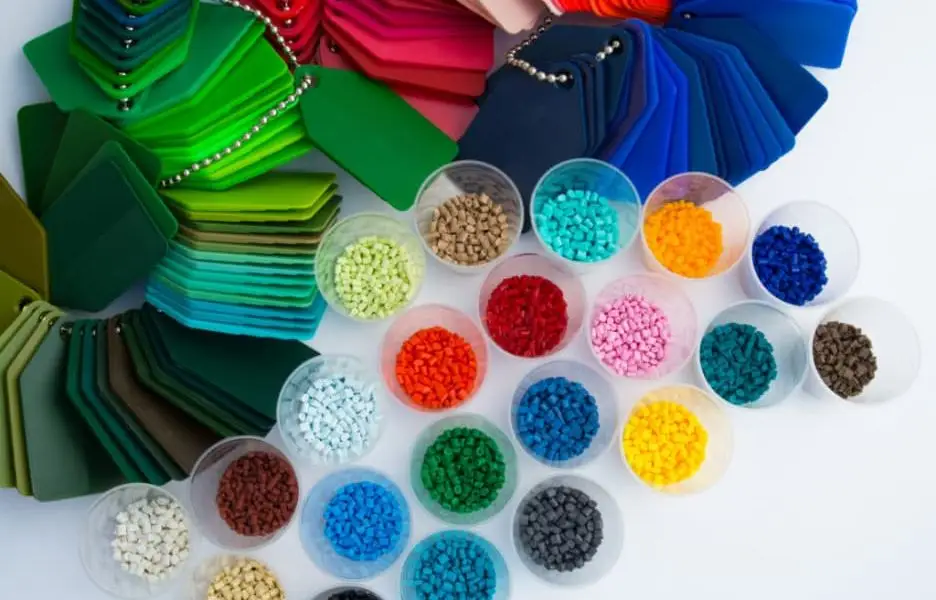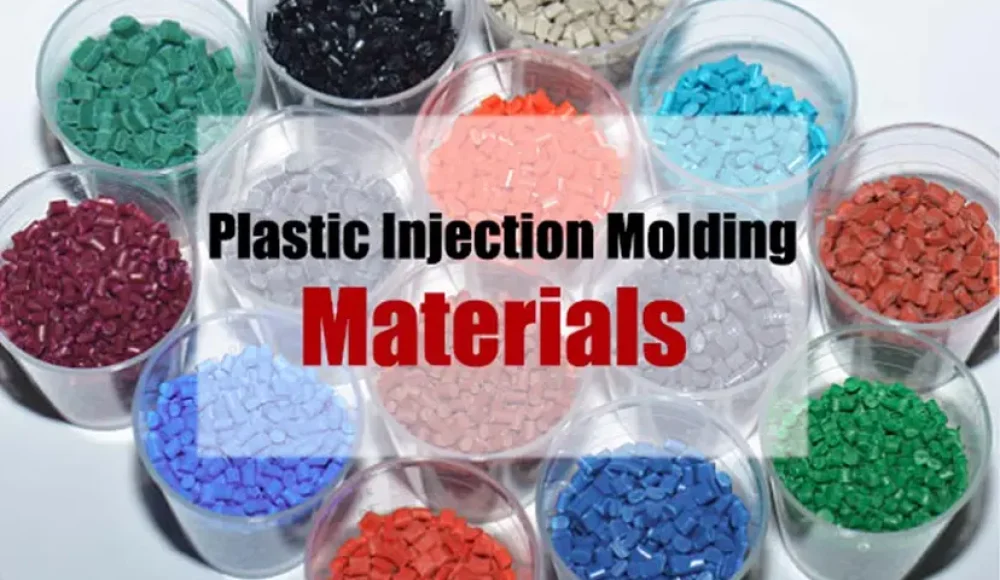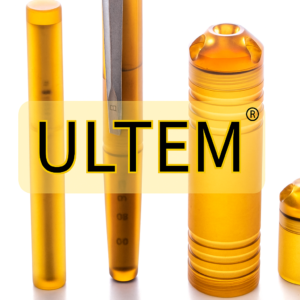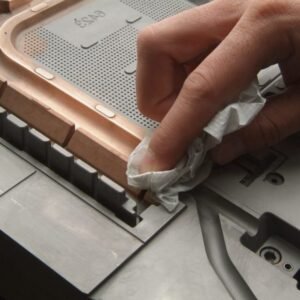يعد اختيار المادة المناسبة أحد أهم الخطوات injection molding design. The choice of thermoplastic resin determines not only the mechanical strength and durability of a molded part but also its manufacturability, الانتهاء من السطح, يكلف, and long-term reliability.
This guide provides engineers and designers with a structured framework for quantitatively evaluating injection molding materials. It focuses on the key mechanical, الحرارية, and chemical properties that influence performance, helping you select the optimal resin for your specific application.
مقدمة

مواد صب حقن البلاستيك
Choosing a thermoplastic resin for injection molding can be a complex engineering decision. Each polymer family exhibits unique characteristics that respond differently to mechanical loads, temperature variations, والظروف البيئية. To make a sound selection, engineers must understand the relationship between material structure and performance, as well as the specific demands of the application.
For safety-critical, high-performance, or reliability-sensitive components, a thorough engineering analysis is mandatory. This includes evaluating stress, أَضْنَى, and environmental exposure to determine which material meets all operational requirements.
لكن, not every project requires extensive simulation or testing. Many molded components operate under mild conditions—such as room temperature and low loads—where common resins like ABS, البولي بروبلين (ص), or polycarbonate (الكمبيوتر) are more than adequate. For such cases, simplified guidelines—covered later in this guide under “Don’t Make Me Do the Math”—can help non-engineers make practical and cost-effective material decisions.
Why Material Selection Matters
Material selection often becomes a guessing game when there’s a lack of understanding about:
How internal polymer structure affects properties.
How to clearly define real-world application requirements.
Where to find reliable and comparable data for candidate materials.
Even small variations in resin composition or processing parameters can significantly affect قوة الشد, استقرار الأبعاد, or impact resistance. لذلك, informed material selection ensures consistent quality, كفاءة التكلفة, and predictable performance throughout a product’s lifecycle.
Comparing Common Injection Molding Materials
| Resin Type | الفوائد الرئيسية | التطبيقات النموذجية | Design Considerations |
| بوم (اسيتال) | قاسٍ, قاسٍ, قوي, الاحتكاك المنخفض, مقاوم التعب | التروس, مضخات, impellers, المفاتيح, المقابض | Sensitive to shrinkage; difficult to paint or coat |
| PMMA (أكريليك) | Excellent clarity, مقاوم للخدش, low shrink | العدسات, علامات, light pipes | هش, poor chemical resistance |
| عضلات المعدة | قاسٍ, مقاومة كيميائية, مستقر الأبعاد, منخفضة التكلفة | Electronic housings, handheld devices, cosmetic parts | May show knit lines; thick sections can sink |
| البولي إثيلين عالي الكثافة | قاسٍ, تأثير- and chemical-resistant, خفيفة الوزن | Containers, ألعاب الأطفال, أثاث | High shrinkage, low surface energy |
| الكمبيوتر (البولي) | قوة عالية, clarity, والمقاومة تأثير | العدسات, lighting, المساكن, bulletproof glass | Poor chemical resistance; may bubble in thick parts |
| ABS/PC Blend | Good balance of toughness and processability | السيارات, إلكترونيات | Lower cost than PC; improved molding properties |
| ص (البولي بروبلين) | مرن, مقاوم التعب, مقاومة كيميائية | Hinges, قبعات, medical tubing | Shrink and warp possible; may void in thick areas |
| نظرة خاطفة | High-temperature and chemical resistance | الفضاء الجوي, مضخات, أجهزة طبية | Very expensive; Ultem or PPSU are cheaper alternatives |
| جزيرة الأمير إدوارد (Ultem) | قوي, مقاوم للحرارة, مستقر الأبعاد | طبي, lighting, HVAC components | غالي, but cheaper than PEEK |
| PPSU | High heat and chemical tolerance, قابلة للإعجاب | Medical trays, aircraft interiors | Thick sections may void; limited color options |
| السلطة الفلسطينية (نايلون) | قوة عالية, مقاومة التآكل | التروس, البطانات, الأجزاء الهيكلية | يمتص الرطوبة; may warp |
| PBT/PET | Excellent electrical and dimensional properties | الأجهزة, السيارات, كهربائي | Prone to warp in glass-filled grades |
| LCP | High flow, المقاومة الكيميائية, التمدد الحراري المنخفض | الموصلات, مركبات ثنائي الفينيل متعدد الكلور | غالي, anisotropic shrink |
| بس | High chemical and thermal resistance | السيارات, electrical housings | Requires precise crystallization control |
About the Standard Material Data Sheet
أ material data sheet provides essential mechanical and thermal properties—typically measured at room temperature. While these values (على سبيل المثال, قوة الشد, elongation, flexural modulus) are important, they often describe failure conditions rather than real-world performance. Engineers must therefore interpret data sheets carefully, considering environmental conditions, جزء هندسة, and expected loads.
أكثر من 85,000 commercial plastics exist, grouped into around 45 polymer families. Thermoplastics dominate modern manufacturing, accounting for roughly 85% of all plastic use, while thermosets make up the remaining 15%. Supplementary information from suppliers—like design manuals and case studies—can help bridge the data gaps for engineering-grade materials.
Perfect 👍 Let’s continue and complete the rewritten and SEO-optimized version of your article — picking up from where it left off (“Don’t Make Me Do the Math!") and finishing it with a strong, educational ending that fits your technical SEO writing style.
Don’t Make Me Do the Math!
Many material property charts show ratios like strength-to-weight أو stiffness-to-cost, but in practical mold design, few engineers have time to crunch these numbers manually. بدلاً من, the best practice is to create a shortlist of viable materials based on mechanical and thermal requirements, ثم compare specific, real-world properties (على سبيل المثال, tensile strength at operating temperature, shrink rate, and melt flow).
Online material databases and supplier datasheets make this easier than ever. Simply filtering by your performance range can narrow hundreds of resins down to a handful of candidates. Once that shortlist is ready, لك molder or resin distributor can provide detailed test data for validation and part trials.
نصيحة محترف: Always test with the بالضبط resin grade you plan to use in production — even small differences in additives, moisture content, or supplier formulations can significantly change flow and shrink behavior.
الاختبار والتحقق من الصحة: Never Skip This Step
Material selection doesn’t end at the data sheet. After you’ve identified one or two promising candidates, prototype testing is essential. Build a small pilot mold, run short shots, and inspect critical features. This reveals how the material flows, fills, and warps in your actual part geometry — insights that simulations can’t always predict.
Typical validation checks include:
دقة الأبعاد — Compare measured dimensions with CAD data.
الانتهاء من السطح — Confirm texture replication and gloss levels.
Mechanical testing — Evaluate tensile, تأثير, and fatigue performance.
Environmental resistance — Test against chemicals, التعرض للأشعة فوق البنفسجية, or temperature cycles.
By catching material-related issues early, you can prevent costly redesigns or warranty claims later.
Partner with Your Molding Expert
Even the most experienced design engineers benefit from collaborating with an experienced molder during material selection. Mold designers and process engineers can advise on:
Proper mold steel choices to match resin abrasiveness or corrosion tendencies.
The need for mold coatings أو hot runner compatibility for difficult materials.
ضبط gate placement, venting, و زوايا مسودة for specific resin flow properties.
Their production insight often leads to better long-term consistency and fewer processing challenges — ultimately saving both time and money.
Sustainability and Recycling Considerations
Today’s manufacturing environment places increasing emphasis on sustainability. When possible, يعتبر recycled or bio-based materials. Many resin suppliers now offer PCR (Post-Consumer Recycled) أو bio-resin versions of standard polymers such as PP, حيوان أليف, and PA.
While these sustainable options can slightly alter mechanical or color properties, they help reduce environmental impact and support greener product initiatives. Always test these materials under real processing conditions to ensure consistent quality.
الأفكار النهائية
Choosing the right injection molding material is one of the most important decisions in part design. The resin you choose determines not only product strength and performance but also يكلف, متانة, and manufacturability.
Here’s a quick summary to guide your process:
Define your requirements — strength, درجة حرارة, chemical exposure, مظهر, والتكلفة.
Shortlist materials that meet your property range.
Evaluate process compatibility — shrinkage, moisture sensitivity, قابلية القابلية.
Prototype and validate before final selection.
Consult your molder to fine-tune production parameters.
A thoughtful, data-driven approach ensures every molded component meets performance targets and budget expectations — the foundation of reliable, repeatable production.
Internal Linking Suggestions (for WordPress)
13 Types of Surface Finishes in Die Casting




1 فكرت في "دليل اختيار مواد حقن صب”